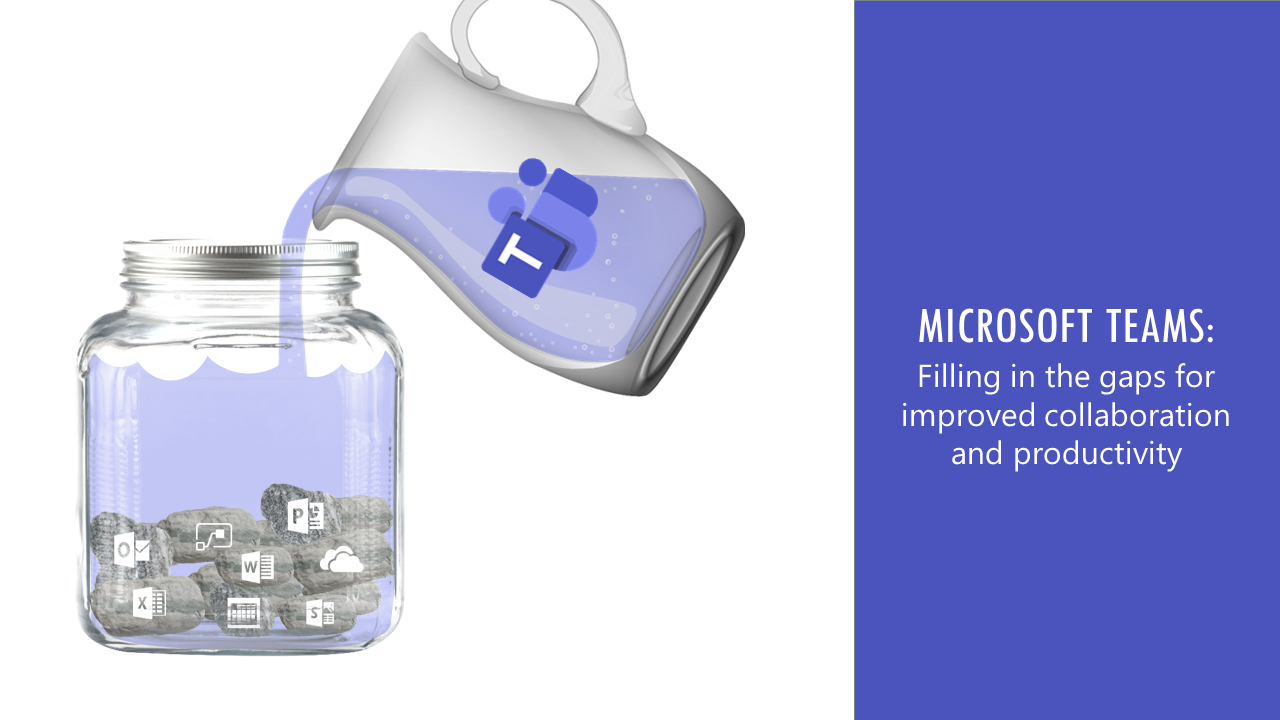The Impact of Microsoft Teams
The Impact of Microsoft Teams
Companies are beginning to place a bigger focus on team performance and productivity. New findings reveal that there has been a 50% increase in “collaborative” work over the past five years. While we’re seeing technology enable workforce collaboration in new and exciting ways, it is important to put the right tools in your team’s hands, so they can communicate and collaborate effectively. In this blog, we will go over Microsoft Teams and a recent study around the benefits of Teams to help you understand the impact of collaboration tools in the workplace.
Filling in the Gaps with Microsoft Teams
There are several collaboration hubs out there, but one of our favorites is Microsoft Teams. The goal of Teams is to allow users to centralize their work in one location to increase efficiency and productivity.
One way to describe Teams is like this: imagine your applications, team websites and other platforms as rocks. When added to a jar, there are gaps between the rocks. However, when water is added to the jar, the gaps are filled in. Microsoft Teams acts as the water to fill in the gaps for improved collaboration.
.png)

Benefits of Microsoft Teams
One question that we hear a lot about Teams is “How does Microsoft Teams help my company?” Although the case is unique based on your company and its needs, we can take a look at the overall benefits of Microsoft Teams.
The Total Economic Impact of Microsoft Teams Study conducted by Forrester revealed improved employee and company performance in many areas including communication, collaboration and security.
Below are some of the findings from the study:
Communication Benefits:
- Teams reduces the number and duration of meetings adding up to a $6.9 million savings over three years.
- Telephony solutions cost savings equaling to $648,727 over three years
- Users saved 7.6 minutes per day due to improved call quality
- Total time savings from the mechanics of switching and cognitive re-engagement is nearly $4.8 million.
Collaboration Benefits:
- Features like co-authoring, searching documents, version control and conversations in one central location saved information workers 4 hours per week. This results in $14.3 million in savings over three years.
- Decision-makers can confer with peers more efficiently improving their “time-to-decision” by 17.7%.
- Firstline workers saved 45 minutes per week since they can share information faster and find resources to collaborate with team members. This equates to $501,214 in savings over three years.
- Conversation threads result in a reduction of emails sent and the time spent searching for emails. The average worker receives about 89 emails per day and this is reduced by 17.3% with Teams.
Security Benefits:
- Teams provides a secure location for collaboration. About 84% of companies interviewed stated it improves remote working security.
- Resources are available in one, cloud-based location with Teams and this reduced downtime by 14.6%.
- Consolidating onto a single platform removes complexity. 86% of respondents agree that Microsoft Teams has better privacy controls than any other communication solution.

SHARE